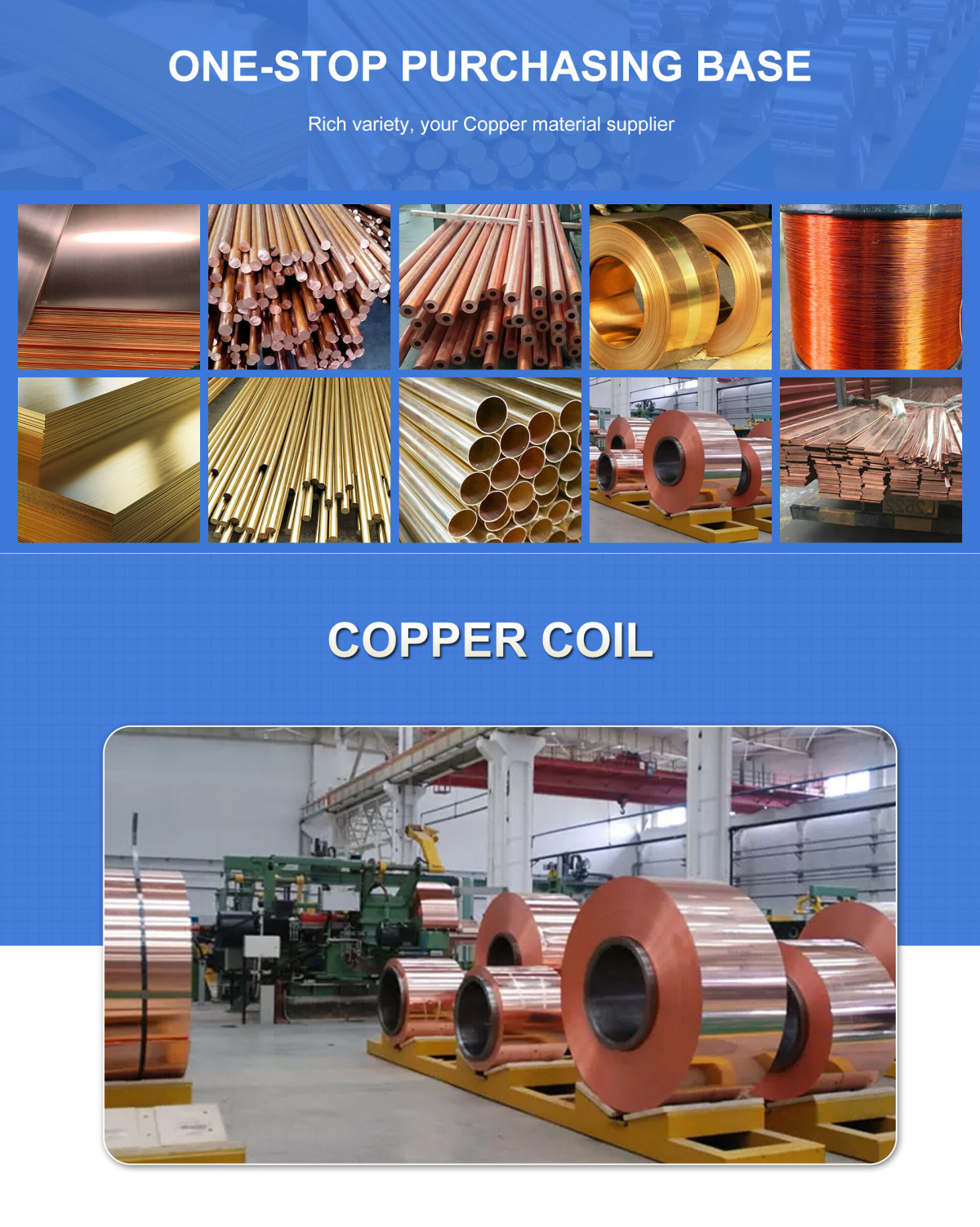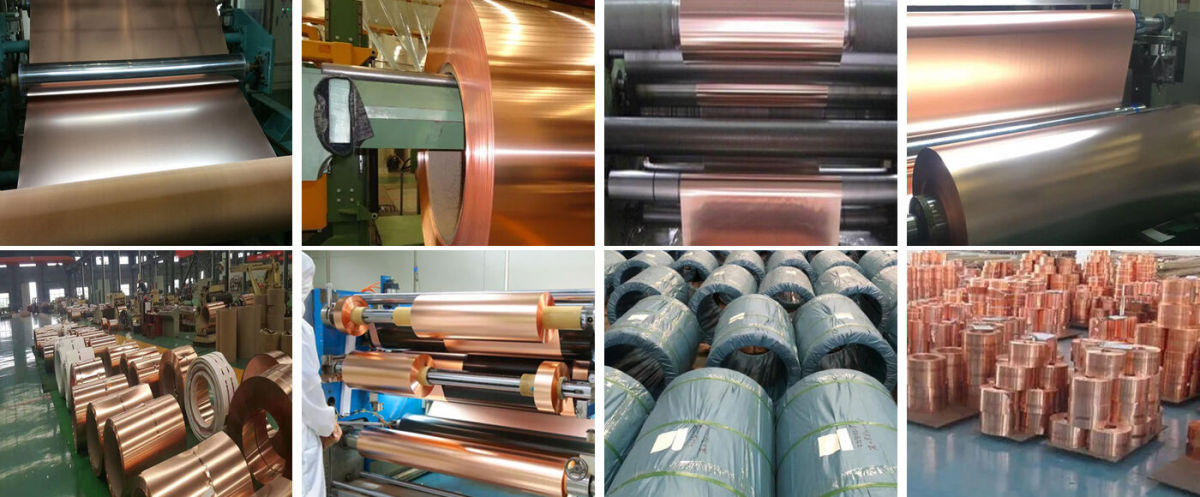
Detailed Dimensions
- Custom sizes (e.g., thicker strips or wider coils) are often available upon request .
- For precision applications, tolerances as tight as ±0.02 mm are achievable .
International Standards
C62300 strip and coil are governed by several key standards:
Detailed Chemical Composition of C62300 Aluminum Bronze
C62300 is an aluminum bronze alloy primarily composed of copper (Cu), aluminum (Al), and iron (Fe), with minor additions of manganese (Mn), silicon (Si), nickel (Ni), and tin (Sn). The chemical composition is standardized as follows:
Key Notes:
- Aluminum (Al) enhances strength, hardness, and corrosion resistance.
- Iron (Fe) refines grain structure and improves mechanical strength
- Trace elements like Mn and Si aid in deoxidation and improve workability
Mechanical Properties of C62300 Aluminum Bronze
C62300 exhibits excellent mechanical properties, making it suitable for demanding industrial applications. The values vary slightly depending on product form (e.g., extruded bars, forgings) and temper conditions (e.g., HR50, TQ50).
Typical Mechanical Properties
Physical Properties
Key Notes:
- High Strength-to-Weight Ratio: Ideal for components like gears and valve stems
- Wear Resistance: Suitable for bearings and bushings in marine and industrial environments
- Thermal Stability: Maintains performance in high-temperature applications (e.g., hydraulic systems)

Production process and product advantages of C62300 copper strip and copper coil:
1. Production process
Continuous extrusion method
The production of C62300 copper strip adopts continuous extrusion process, which heats and deforms the Φ20 copper rod through continuous extrusion equipment, and combines circulating water cooling to form a blank with the required cross-sectional shape. This technology has the characteristics of high efficiency and energy saving, high yield rate and short production cycle. The product has high conductivity, low oxygen content and excellent mechanical properties.
Rolling process
The process includes: incoming material inspection → milling surface and edge milling → rough rolling → intermediate annealing → finishing rolling → finished product annealing → surface cleaning → shearing → packaging.
Key steps such as annealing (700-750℃) and rolling treatment ensure that the material structure is dense and the performance is stable.
Some processes combine copper powder sintering with multiple rolling to improve material uniformity and mechanical strength.
Application of advanced technology
Adopting large ingot hot rolling, constant pressure cold rolling, thickness automatic control and other technologies, combined with advanced annealing equipment, to ensure high precision and surface finish of the product.
Copper coil stacking technology (such as MULTICOIL®) supports simultaneous processing of multiple coils, reducing stamping downtime and mold loss.
2. Product advantages
Excellent mechanical properties
Tensile strength ≥490 MPa, yield strength ≥340 MPa, elongation ≥16%, hardness HB ≥100, suitable for high-strength wear-resistant scenarios.
High-temperature mechanical properties are stable, and wear resistance can be maintained at high temperatures (such as gears, bearings, etc.).
Corrosion and oxidation resistance
Containing elements such as iron and nickel to enhance corrosion resistance, can resist atmospheric, water and chemical media corrosion, and is suitable for chemical and marine environments.
Outstanding oxidation resistance, suitable for high-temperature conditions (such as aerospace components).
Thermal and electrical conductivity
The copper matrix provides high conductivity (thermal conductivity 53.7 W/mK), suitable for electrical components and high conductivity demand scenarios.
Processing adaptability
Supports cold and hot processing and welding, excellent casting performance, can be processed into various forms such as bars, plates, forgings, etc.
Low friction coefficient and anti-seizure, suitable for manufacturing friction parts such as bearings and sleeves.
Cost and substitution advantages
Compared with tin bronze, stainless steel and other materials, it has lower cost and becomes a cost-effective alternative.
It can replace high-tin bronze for wear-resistant scenes that require conductivity.
3. Application fields
Industrial field: high-strength wear-resistant parts such as gears, bushings, flanges, and sealing rings.
Aerospace: fatigue-resistant key parts such as bearing races and helicopter swash plate bearings.
Electrical and new energy: conductive components such as copper strips, cables, and transformers for power batteries.
Chemical and shipbuilding: corrosion-resistant parts such as valves and propellers.
Q1:Do you provide samples? Is it free or extra?
A1:Yes, we can provide samples free of charge and the customer will pay the freight.
Q2:What if I don't have export experience ?
A2:We have reliable forwarder agent which can ship items to you by sea/air/Express to your doorstep. Any way, we will help you choose the most suitable shipping service.
Q3:How long is your lead time?
A3:If it is in stock, it is usually 5-10 days. Or, if there is no inventory, 15 days, depending on the quantity.
Q4:What are your terms of payment?
A4:30% T/T deposit in advance, 70% T/T balance within 5 days after B/L copy, 100%.Irrevocable L/C at sight, 100% Irrevocable L/C after receive B/L 30-120 days, O/A.
Q5:How is your technical support?
A5:We provide lifetime online support through Whatsapp/ Skype/ Wechat/ Email. Any problem after delivery, we will offer you call anytime.
Welcome To Your Inquiry
What can we help you?
RELATED PRODUCTS










